HSBC 2007 Annual Report Download - page 51
Download and view the complete annual report
Please find page 51 of the 2007 HSBC annual report below. You can navigate through the pages in the report by either clicking on the pages listed below, or by using the keyword search tool below to find specific information within the annual report.-
 1
1 -
 2
2 -
 3
3 -
 4
4 -
 5
5 -
 6
6 -
 7
7 -
 8
8 -
 9
9 -
 10
10 -
 11
11 -
 12
12 -
 13
13 -
 14
14 -
 15
15 -
 16
16 -
 17
17 -
 18
18 -
 19
19 -
 20
20 -
 21
21 -
 22
22 -
 23
23 -
 24
24 -
 25
25 -
 26
26 -
 27
27 -
 28
28 -
 29
29 -
 30
30 -
 31
31 -
 32
32 -
 33
33 -
 34
34 -
 35
35 -
 36
36 -
 37
37 -
 38
38 -
 39
39 -
 40
40 -
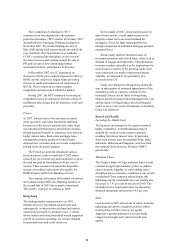 41
41 -
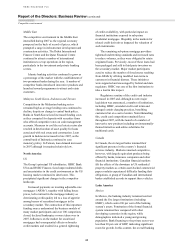 42
42 -
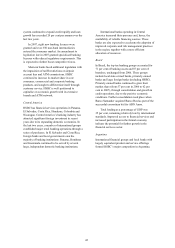 43
43 -
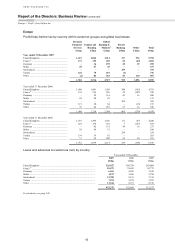 44
44 -
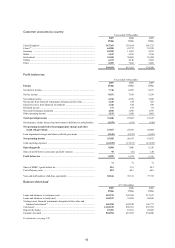 45
45 -
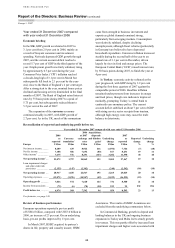 46
46 -
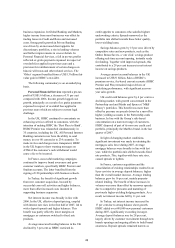 47
47 -
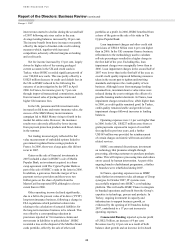 48
48 -
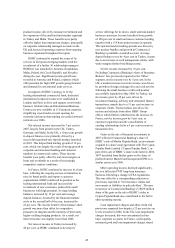 49
49 -
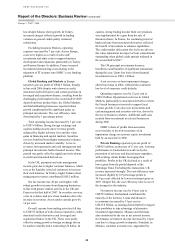 50
50 -
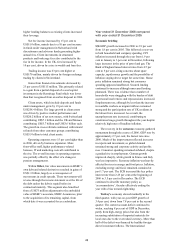 51
51 -
 52
52 -
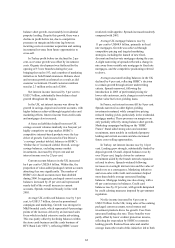 53
53 -
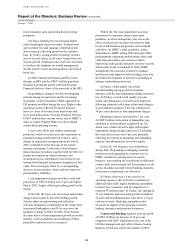 54
54 -
 55
55 -
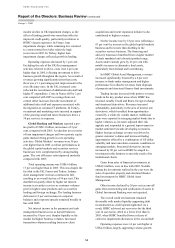 56
56 -
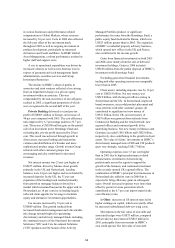 57
57 -
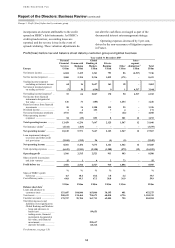 58
58 -
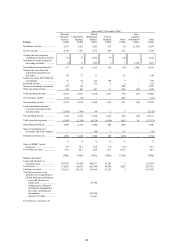 59
59 -
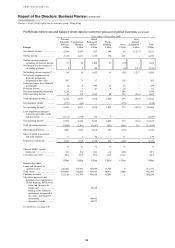 60
60 -
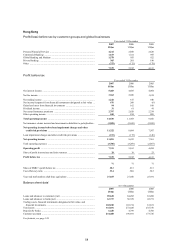 61
61 -
 62
62 -
 63
63 -
 64
64 -
 65
65 -
 66
66 -
 67
67 -
 68
68 -
 69
69 -
 70
70 -
 71
71 -
 72
72 -
 73
73 -
 74
74 -
 75
75 -
 76
76 -
 77
77 -
 78
78 -
 79
79 -
 80
80 -
 81
81 -
 82
82 -
 83
83 -
 84
84 -
 85
85 -
 86
86 -
 87
87 -
 88
88 -
 89
89 -
 90
90 -
 91
91 -
 92
92 -
 93
93 -
 94
94 -
 95
95 -
 96
96 -
 97
97 -
 98
98 -
 99
99 -
 100
100 -
 101
101 -
 102
102 -
 103
103 -
 104
104 -
 105
105 -
 106
106 -
 107
107 -
 108
108 -
 109
109 -
 110
110 -
 111
111 -
 112
112 -
 113
113 -
 114
114 -
 115
115 -
 116
116 -
 117
117 -
 118
118 -
 119
119 -
 120
120 -
 121
121 -
 122
122 -
 123
123 -
 124
124 -
 125
125 -
 126
126 -
 127
127 -
 128
128 -
 129
129 -
 130
130 -
 131
131 -
 132
132 -
 133
133 -
 134
134 -
 135
135 -
 136
136 -
 137
137 -
 138
138 -
 139
139 -
 140
140 -
 141
141 -
 142
142 -
 143
143 -
 144
144 -
 145
145 -
 146
146 -
 147
147 -
 148
148 -
 149
149 -
 150
150 -
 151
151 -
 152
152 -
 153
153 -
 154
154 -
 155
155 -
 156
156 -
 157
157 -
 158
158 -
 159
159 -
 160
160 -
 161
161 -
 162
162 -
 163
163 -
 164
164 -
 165
165 -
 166
166 -
 167
167 -
 168
168 -
 169
169 -
 170
170 -
 171
171 -
 172
172 -
 173
173 -
 174
174 -
 175
175 -
 176
176 -
 177
177 -
 178
178 -
 179
179 -
 180
180 -
 181
181 -
 182
182 -
 183
183 -
 184
184 -
 185
185 -
 186
186 -
 187
187 -
 188
188 -
 189
189 -
 190
190 -
 191
191 -
 192
192 -
 193
193 -
 194
194 -
 195
195 -
 196
196 -
 197
197 -
 198
198 -
 199
199 -
 200
200 -
 201
201 -
 202
202 -
 203
203 -
 204
204 -
 205
205 -
 206
206 -
 207
207 -
 208
208 -
 209
209 -
 210
210 -
 211
211 -
 212
212 -
 213
213 -
 214
214 -
 215
215 -
 216
216 -
 217
217 -
 218
218 -
 219
219 -
 220
220 -
 221
221 -
 222
222 -
 223
223 -
 224
224 -
 225
225 -
 226
226 -
 227
227 -
 228
228 -
 229
229 -
 230
230 -
 231
231 -
 232
232 -
 233
233 -
 234
234 -
 235
235 -
 236
236 -
 237
237 -
 238
238 -
 239
239 -
 240
240 -
 241
241 -
 242
242 -
 243
243 -
 244
244 -
 245
245 -
 246
246 -
 247
247 -
 248
248 -
 249
249 -
 250
250 -
 251
251 -
 252
252 -
 253
253 -
 254
254 -
 255
255 -
 256
256 -
 257
257 -
 258
258 -
 259
259 -
 260
260 -
 261
261 -
 262
262 -
 263
263 -
 264
264 -
 265
265 -
 266
266 -
 267
267 -
 268
268 -
 269
269 -
 270
270 -
 271
271 -
 272
272 -
 273
273 -
 274
274 -
 275
275 -
 276
276 -
 277
277 -
 278
278 -
 279
279 -
 280
280 -
 281
281 -
 282
282 -
 283
283 -
 284
284 -
 285
285 -
 286
286 -
 287
287 -
 288
288 -
 289
289 -
 290
290 -
 291
291 -
 292
292 -
 293
293 -
 294
294 -
 295
295 -
 296
296 -
 297
297 -
 298
298 -
 299
299 -
 300
300 -
 301
301 -
 302
302 -
 303
303 -
 304
304 -
 305
305 -
 306
306 -
 307
307 -
 308
308 -
 309
309 -
 310
310 -
 311
311 -
 312
312 -
 313
313 -
 314
314 -
 315
315 -
 316
316 -
 317
317 -
 318
318 -
 319
319 -
 320
320 -
 321
321 -
 322
322 -
 323
323 -
 324
324 -
 325
325 -
 326
326 -
 327
327 -
 328
328 -
 329
329 -
 330
330 -
 331
331 -
 332
332 -
 333
333 -
 334
334 -
 335
335 -
 336
336 -
 337
337 -
 338
338 -
 339
339 -
 340
340 -
 341
341 -
 342
342 -
 343
343 -
 344
344 -
 345
345 -
 346
346 -
 347
347 -
 348
348 -
 349
349 -
 350
350 -
 351
351 -
 352
352 -
 353
353 -
 354
354 -
 355
355 -
 356
356 -
 357
357 -
 358
358 -
 359
359 -
 360
360 -
 361
361 -
 362
362 -
 363
363 -
 364
364 -
 365
365 -
 366
366 -
 367
367 -
 368
368 -
 369
369 -
 370
370 -
 371
371 -
 372
372 -
 373
373 -
 374
374 -
 375
375 -
 376
376 -
 377
377 -
 378
378 -
 379
379 -
 380
380 -
 381
381 -
 382
382 -
 383
383 -
 384
384 -
 385
385 -
 386
386 -
 387
387 -
 388
388 -
 389
389 -
 390
390 -
 391
391 -
 392
392 -
 393
393 -
 394
394 -
 395
395 -
 396
396 -
 397
397 -
 398
398 -
 399
399 -
 400
400 -
 401
401 -
 402
402 -
 403
403 -
 404
404 -
 405
405 -
 406
406 -
 407
407 -
 408
408 -
 409
409 -
 410
410 -
 411
411 -
 412
412 -
 413
413 -
 414
414 -
 415
415 -
 416
416 -
 417
417 -
 418
418 -
 419
419 -
 420
420 -
 421
421 -
 422
422 -
 423
423 -
 424
424 -
 425
425 -
 426
426 -
 427
427 -
 428
428 -
 429
429 -
 430
430 -
 431
431 -
 432
432 -
 433
433 -
 434
434 -
 435
435 -
 436
436 -
 437
437 -
 438
438 -
 439
439 -
 440
440 -
 441
441 -
 442
442 -
 443
443 -
 444
444 -
 445
445 -
 446
446 -
 447
447 -
 448
448 -
 449
449 -
 450
450 -
 451
451 -
 452
452 -
 453
453 -
 454
454 -
 455
455 -
 456
456 -
 457
457 -
 458
458 -
 459
459 -
 460
460 -
 461
461 -
 462
462 -
 463
463 -
 464
464 -
 465
465 -
 466
466 -
 467
467 -
 468
468 -
 469
469 -
 470
470 -
 471
471 -
 472
472 -
 473
473 -
 474
474 -
 475
475 -
 476
476
 |
 |
49
higher lending balances as existing clients increased
their leverage.
Net fee income increased by 15 per cent to
US$1.0 billion, mainly due to a 10 per cent increase
in funds under management in Switzerland with
discretionary and advisory funds generating higher
annual fees. Client investments in structured
products and brokerage fees also contributed to the
rise in fee income. In the UK, fees increased by
10 per cent, driven by a rise in wealth and loan fees.
Trading income was 63 per cent higher at
US$170 million, mainly driven by foreign exchange
trading by clients in Switzerland.
Gains from financial investments decreased by
23 per cent to US$115 million. This primarily related
to a gain from a partial disposal of a seed capital
investment in the Hermitage Fund which was lower
than that recognised from an earlier disposal in 2006.
Client assets, which include deposits and funds
under management, grew by 19 per cent to
US$258.4 billion. The large growth in client assets
was driven by positive market performance and
US$20.2 billion of net new money, with Switzerland
contributing US$7.1 billion and the UK and Monaco
contributing US$3.7 billion and US$3.6 billion each.
The growth in cross-referrals continued, with inward
referrals from other customer groups contributing
US$3.9 billion to total client assets.
Operating expenses were 15 per cent higher than
in 2006, driven by business expansion. More
front-office staff, higher performance-related
bonuses, IT and marketing costs all contributed to
the rise. The overall increase in operating expenses
was partially offset by the effect of a change in
pension arrangements.
Within Other, fair value movements in HSBC’s
own debt and related derivatives resulted in gains of
US$1.3 billion, largely as a consequence of
movements in credit spreads. These movements will
reverse through the income statement over the life of
the debt unless the debt is repaid before its
contractual maturity. This segment also benefited
from a US$73 million adjustment to the embedded
value of HSBC’s associate, HSBC Assurances, prior
to the acquisition of its remaining capital, from
which date it was accounted for as a subsidiary.
Year ended 31 December 2006 compared
with year ended 31 December 2005
Economic briefing
UK GDP growth increased in 2006 to 2.9 per cent
from 1.8 per cent in 2005. This followed a recovery
in both household and company spending. CPI
inflation increased through the year from 1.9 per
cent in January to 3 per cent in December, following
large increases in the price of petrol and gas. The
Bank of England raised interest rates from 4.5 per
cent to 5 per cent, citing concerns about spare
capacity, rapid money growth and the possibility of
inflation staying above target for some time. House
price inflation remained strong but consumer
spending appeared unaffected. Secured lending
continued to increase although unsecured lending
plateaued. There was evidence that a number of
households were struggling with the burden of debt
as personal insolvencies and repossessions increased.
Employment rose, although by less than the increase
in available workers as migrant inflows remained
strong and the participation rate of UK residents in
the labour force increased. As a result, the
unemployment rate increased, contributing to
constrained wage growth throughout the year despite
relatively high rates of headline inflation.
The recovery in the eurozone economy gathered
momentum through the course of 2006. GDP rose by
approximately 2.7 per cent, the fastest rate since
2000. Much of the improvement reflected increases
in exports and investment, as global demand
remained strong and corporate activity and profits
rose. Consumer spending remained subdued, despite
a gradual rise in employment. German growth
improved sharply, while growth in France and Italy
was less impressive. Eurozone inflation was heavily
affected by rises in energy and food prices. Inflation,
excluding energy and food, remained contained at
just 1.7 per cent. The ECB increased the key policy
interest rate from 2.25 per cent at the beginning of
2006 to 3.5 per cent in December. The ECB
continued to describe monetary policy as
‘accommodative’, thereby effectively ending the
year with a bias towards tightening.
Turkey’s economy slowed markedly in the
third quarter, with year-on-year GDP growth of
3.4 per cent, down from 7.8 per cent in the second
quarter. The current account deficit continued to
widen, reaching 8 per cent of GDP in December,
partly from high-energy prices but also from the
increasing substitution of imported materials for
local ones due to the overvalued currency. More than
half of the deficit was financed by healthy foreign
direct investment inflows. The International
